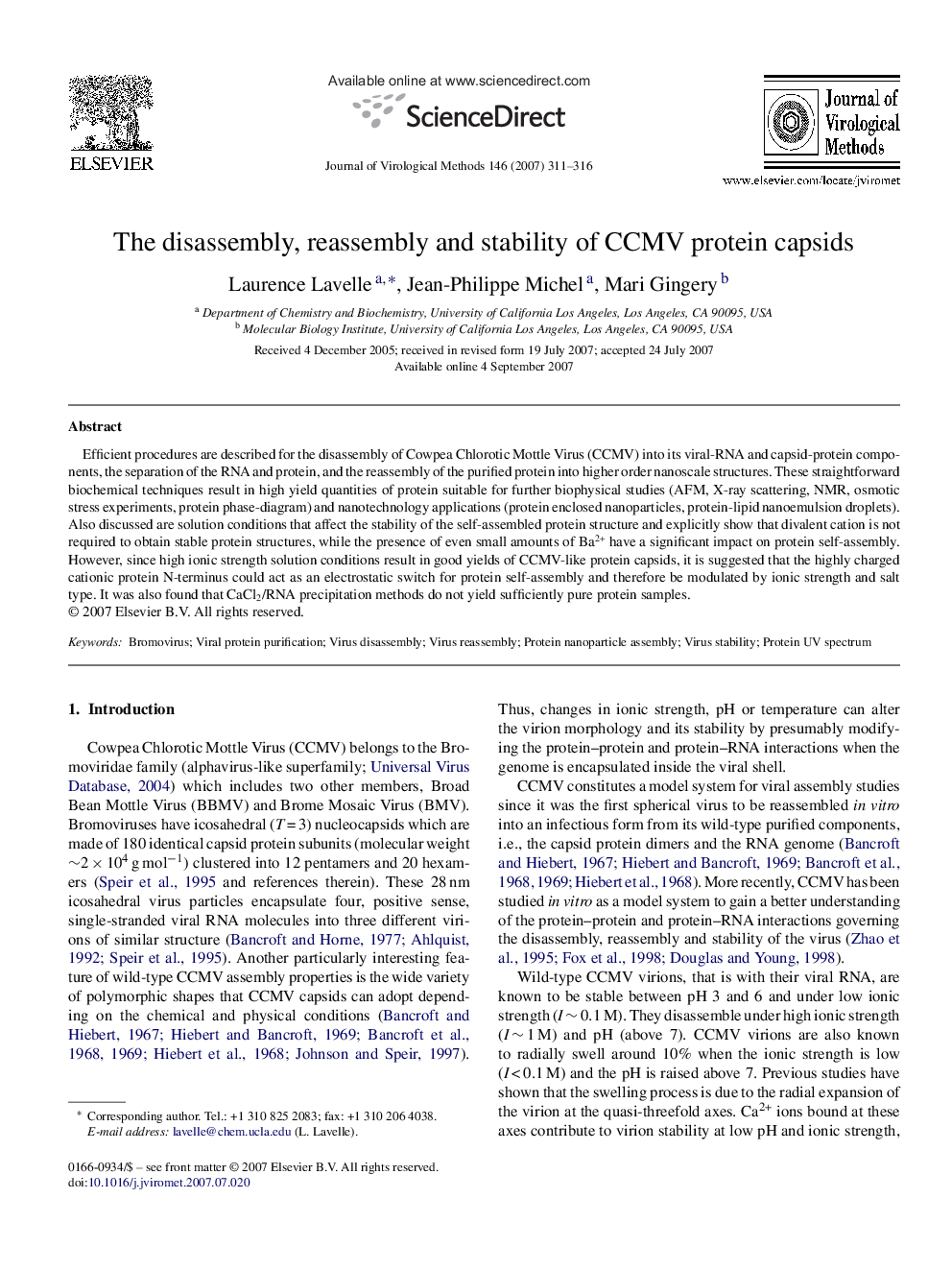| Article ID | Journal | Published Year | Pages | File Type |
|---|---|---|---|---|
| 3407996 | Journal of Virological Methods | 2007 | 6 Pages |
Efficient procedures are described for the disassembly of Cowpea Chlorotic Mottle Virus (CCMV) into its viral-RNA and capsid-protein components, the separation of the RNA and protein, and the reassembly of the purified protein into higher order nanoscale structures. These straightforward biochemical techniques result in high yield quantities of protein suitable for further biophysical studies (AFM, X-ray scattering, NMR, osmotic stress experiments, protein phase-diagram) and nanotechnology applications (protein enclosed nanoparticles, protein-lipid nanoemulsion droplets). Also discussed are solution conditions that affect the stability of the self-assembled protein structure and explicitly show that divalent cation is not required to obtain stable protein structures, while the presence of even small amounts of Ba2+ have a significant impact on protein self-assembly. However, since high ionic strength solution conditions result in good yields of CCMV-like protein capsids, it is suggested that the highly charged cationic protein N-terminus could act as an electrostatic switch for protein self-assembly and therefore be modulated by ionic strength and salt type. It was also found that CaCl2/RNA precipitation methods do not yield sufficiently pure protein samples.
